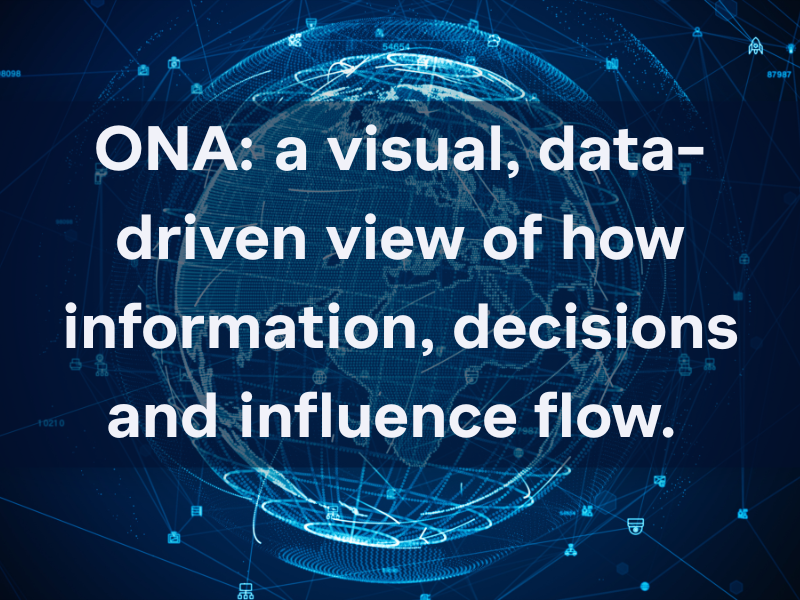There has been a road realignment project going on in front of and to the side of my house for almost six months. The jackhammers, excavators and dump trucks start at sunup and literally rattle my house throughout the day. The beeps, bangs, and exhalations of steam from these beastly machines have become my work companion. Just getting out of my driveway and off my street requires multiple extra turns and time. This project also reduced, in a meaningful way, my sense of space and privacy as a nicely landscaped neighborhood common area was sacrificed for the improvement efforts. Over the weeks, grass, trees and plants were removed and replaced with concrete. Needless to say, it’s been a physical and emotional adjustment.
Our workplace experiences can sometimes feel similar amidst constant change, destruction and construction of our organizational systems. These changes impact our work, roles and teams—sometimes for the better, sometimes for the worse, and often slow our ability to adapt to change in general.
As a curious observer and student of organizational systems, it’s been interesting watching the process unfold and the various roles the on-site workers play. Among the core project group is what appears to be a project engineer. He knows the master plan and seems to be orchestrating the sequence of events. He has also become my go-to for questions and concerns about the project.
I doubt that “managing citizen/homeowner pain of change” is part of his job description, or that a “homeowner huddle” was on his project plan. And I’ll admit I was initially skeptical that he could or would have a meaningful discussion with me about the project and what to expect next. He was amazing, though! He provided helpful information and was objective and patient with my litany of questions and curiosities. His information, energy and support truly influenced my change journey from irritation to embracing the new normal.
This experience made me think about the work we do in organization design. Organizations must evolve to meet customer expectations, define their competitive advantages, and align their people, processes and technology to achieve their goals. This evolution requires change—sometimes large-scale changes—in how work is done. After all, if the work doesn’t change, the results will not change…, just like the new road in front of my house. Tons of changes had to be made. A new water drainage system had to be designed, utility lines had to be adjusted, the new road carved out, stop signs moved and new sidewalks poured. With all the changes, I gained some things (such as more space in front of my house) and lost some things (like trees beside my home).
Organization designs often require changes to structure, and lots of energy is spent on defining and announcing a new structure. But a new structure in and of itself doesn’t ensure changes to the work. Fortunately, our AlignOrg Methodology is systemic and helps ensure leaders account for all their organizational elements, including work, structure, leadership, culture, metrics and rewards.
Activation at the Speed of Change
The pace of change is only accelerating. The emergence of AI has taken this to a new level and is reshaping how work gets done. As Marc Benioff, CEO and founder of Salesforce, said in an interview with AP, “Artificial intelligence isn’t just the most important technology of our lifetime, but probably the most important of any lifetime.” Our recent Executive Guide highlights how to think about AI systemically and how to go beyond a technology deployment and towards deliberate design to:
- Align AI to an organization’s unique value proposition
- Anticipate and manage the impact of AI across a system
- Design work, roles and decisions for an AI enabled future
- Lead in ways that sustain coherence, performance and purpose
Methods of implementing change need to evolve as well, from static to dynamic insight into how organizations work as a network versus a hierarchy. Beneath the org chart lies the network that drives change. A stumbling block we see many organizations hit is thinking of change as an email communication of the new org structure. In today’s world, the traditional org chart is less meaningful in truly understanding how work is accomplished and how change is influenced across an organization. Organization Network Analysis (ONA), however, gives you a visual and data-driven “X-ray” of how information, decisions and influence actually flow.
I first learned about ONA in graduate school from Michael Arena. Michael researches and writes extensively on social capital and networks and is the author of a best-selling book, Adaptive Space. In the Polinode 2025 “Top 20 People Analytics Influencers,” Arena draws the connection between broader strategic disruption, AI, and organizational advantage. “As AI enhances human capabilities through augmentation, social capital will emerge as the ultimate differentiator. As a result, we must more fully leverage network analysis to unlock hidden reservoirs of trust, collaboration and influence — the essential currencies in an era of rapid disruption.”

ONA is a bit complex and certainly a different way of thinking about organizations. It’s powerful, though, and necessary given the dynamic nature of organizations and the velocity of change. We utilized ONA with a client recently. Here are three practical applications and lessons learned:
Revealed How Work Really Gets Done
The ONA mapped the actual flow of information, decisions and collaboration—not the lines and boxes on the org chart. It identified hidden influencers, bottlenecks and isolated teams.
Provided Insights to Strengthen Connection, Trust and Agility
The network maps showed which groups or individuals are overly central (risk of overload) and where collaboration gaps exist. It provided useful insight that would have otherwise been unknown on how to rebalance workloads, build bridges across silos and ensure change initiatives reach every corner of the network.
Highlighted Innovation and Change Readiness
Networks reveal where ideas emerge and how fast they spread, which is critical for innovation and adaptive change strategies. Organizations often cite a need for innovation, but the reality is that organizations are designed to reject innovation because it injects so many unknowns, such as large capital investments with unknown ROIs. Network maps enable organizations to build cross-functional innovation clusters and monitor how knowledge and creativity move through the system.
ONA Lessons Learned
ONA is a treasure trove of data and insight, which can lead to unhelpful rabbit holes. Here are lessons learned to harness the power of the network maps.
- Develop a clear picture of what you’re trying to solve for. Parse out what’s relevant to that question.
- Be ready and willing to iterate. Like all analytics, it’s rarely a one-and-done. Learn to have a conversation with stakeholders and with your data tools.
- Remember that data is contextual. Be sure to incorporate not just the ‘what’ but the ‘so what’ from the insights. What makes sense for one organization doesn’t necessarily make sense for another.
I recently completed an AI Prompting Certificate course where the teachers emphasized “keeping humans in the loop.” AI and ONA are powerful enablers, but it’s the human element that ultimately brings value.
If you looked at the organization chart of my road realignment engineer, you probably would not see much of interest. But if you looked at a network analysis, you would likely see an important connector and key influencer. His ability to generate social capital is likely a key differentiator in his role, not just with a construction-weary homeowner but across the full network that it takes to build an actual new road. This type of information could inform how you structure a project, who you put in that role, and how you hire and develop for the role. Ultimately, this knowledge impacts how effectively and efficiently you can open a new road. Now that’s an important result!





